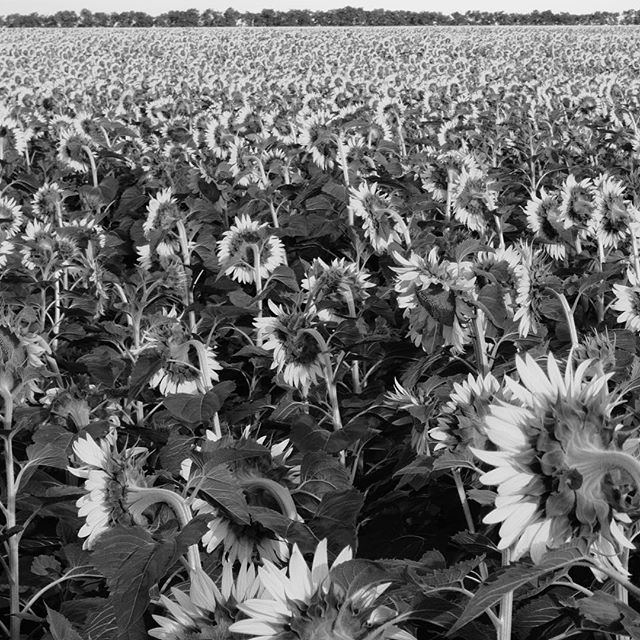I read today in Timothy Snyder’s Bloodlands that Hitler proposed to kill “anyone who even looks at us askance,” and suddenly understood your choice to photograph the blue skies above Nazi camps. This is also a kind of oblique view, a side-glance. You are performing the inverse of Hitler’s threat, looking with suspicion upon your subjects by refusing to look at them directly. It’s no surprise that in the vacuum created by the space between your subject and the direction of your gaze you would find something akin to silence.
While in Ukraine a few weeks ago I was told a story. When the Malaysian airliner MH17 was shot down by the separatists in November 2014, its parts spread out over kilometers. The story goes that many of the pieces fell into fields of sunflowers, which are ubiquitous in that part of Ukraine. People hacked through the flowers searching for the wreckage of the flight. I photographed many similar fields, both because they were visually compelling, and because they were conceptually all that remained of the wreckage, a yellow blanket that hid the remains of a crime, at least for a time.
Now, when I look at those pictures, I struggle with what feels like a too-easy displacement of one object for another. And when I looked online for images of the crash, I found few that featured flowers, and none prominently. Perhaps the presence of flowers grew in the mind of the storyteller, until they acquired symbolic value. Thinking about their long necks and inclined heads, perhaps we should imagine nothing other than a need for sunlight.
/// #image_by_image is an ongoing conversation between photographers Ivan Sigal and Anton Kusters. @ivansigal @antonkusters on Instagram ///
